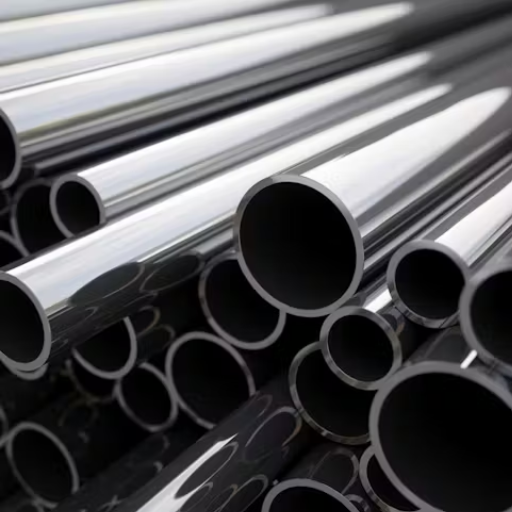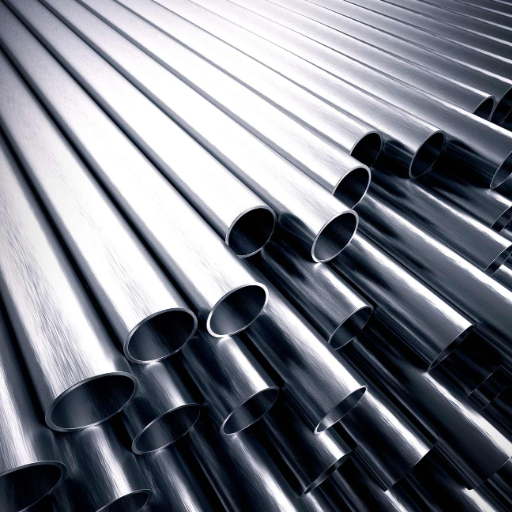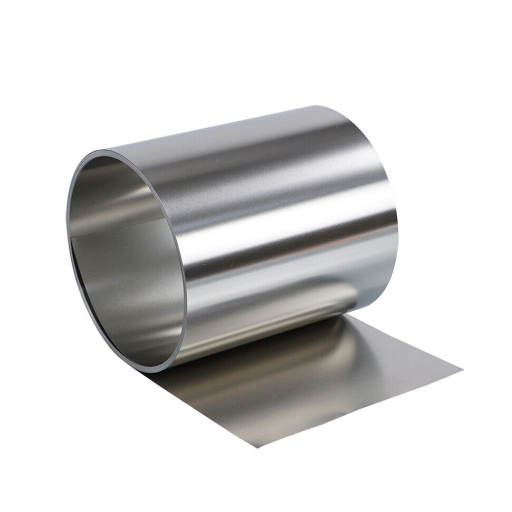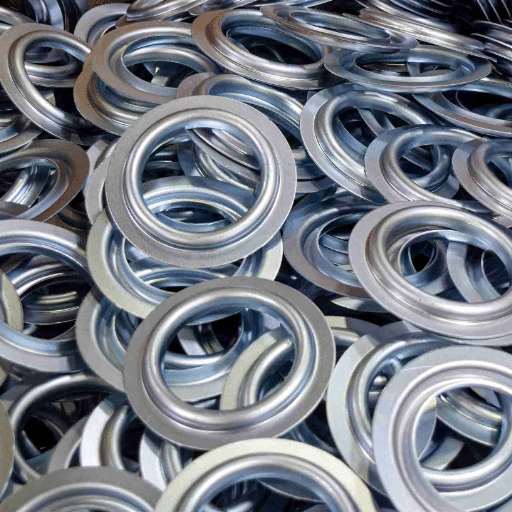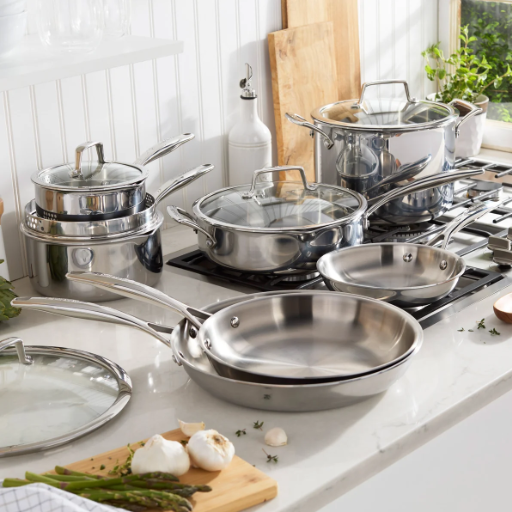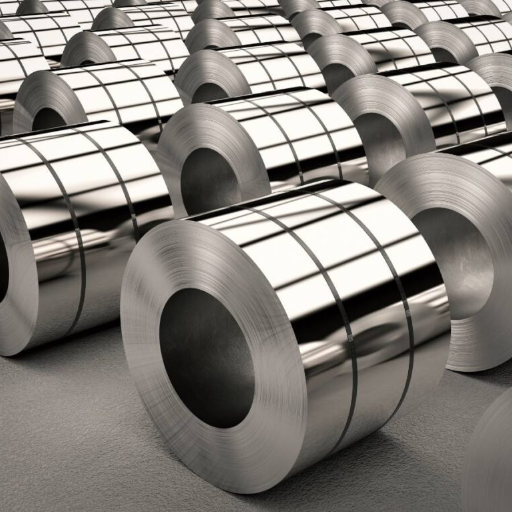Stainless steel stands out as a material which is widely accepted around the world, due to its industrial uses, however, it poses questions for classification stainless steel could be ferrous or nonferrous. Here we will take a close look at the two categories of metals – ferrous and non-ferrous. This article discusses what ferrous and non-ferrous metals are, their important features in relation to steel, and which category does it fits in. Through the description of study composition, magnetism, and use of these metals, people will understand the strong factors that tend to classify metals and their uses.
What Makes a Metal Ferrous or Non-Ferrous?

As previously mentioned, ferrous metals are those metals that contain iron as it’s principal components. In this case, they possess magnetism and unnaturally high tensile strength which makes them useful in construction, automotive, industrial, etc. Cast iron, stainless steel, and carbon steel are examples of ferrous metals. However, most of the ferrous metals tend to corrode easily and, over time, become oxidized without the proper treatment or the use of other alloys.
Aluminium, copper, and brass are metale which non ferrous because lack iron along with being light of weight. Non ferrous metals do not magnetically react because of lack of iron. They do definatly contain attributes of excellent malleability and high corrosions resistance They are used in applications like wiring and aerospace components.
The Role of Iron in Defining Ferrous Metals
The presence of iron in ferrous alloys is strategically useful while iron also helps in distinguishing the ferrous metals. The addition of iron strengthens the tensile magnetic properties of the ferrous metals. This strong structural support also makes them suitable for engineering applications. In addition, iron will make these metals rust prone due to the presence of moisture and Oxygen, however if proper protective layers are applied, these metals will not corrode. These protective layers may include alloying the metals with other metals like chrome or forming stainless steel. In construction, automotive, and tools wrought iron, cast iron, and steel as ferrous and are the critical backbone for the structure because of their durability and mechanical strength.
Key Differences Between Ferrous and Non-Ferrous Metals
The classification of metals is primarily based on constituents, with ferrous ferrous having to do with iron. Ferrous metals are alloys or contain a significant part of iron. Steel and wrought iron are examples of ferrous metals. They are used in construction and construction based machinery due to their ability to resist heavy stress and require rigorous durability. They do have disadvantages, in the form of getting rusted or corroded with time. There are nonferrous metals which are free of iron content, meaning they do not rust of corrode easily. These are copper, aluminum, and zinc, which have vast industrial and structural use, especially in electrical wiring, aerospace components, and decorative applications.
How to Identify If a Metal Contains Iron
One can easily determine if a metal contains iron by checking its response to magnetic forces. This is because ferrous metals, which contains iron, is magnetic due to the iron they have. Magnet may be used to test whether the metal in question has some iron in it by checking if it is attracted to the magnet. Besides, it will also rust and therefore its ferrous metals will rust over time in damp conditions which is just one of the processes where oxidation occurs and metals corrode. To get accurate results, one can conduct the tests for iron in the chemical laboratory or do the spectroscopy of the iron in more detail. All these are very useful in clearly proving the classification of materials according to their iron components.
Is Stainless Steel Classified as a Ferrous Metal?

Indeed stainless steel is a ferrous because it does have iron as its main constituent. Unlike most ferrous metal though, stainless steel is made in a way to prevent it from getting rusted or corroded. The presence of chromium helps form an oxide layer on the surface, preventing it from getting tarnished. This aids in rusting while also allowing building materials to maintain being stainless, giving an added reason why it is preferred.
The Composition of Stainless Steel Alloys
Iron, chromium, and nickel commonly combine together to form stainless steel alloys and its various other forms. Each alloy has a specific function within the construction industry. Chromium being one of the most crucial element forming at least 10.5% of the weight serves the most value in giving the alloy anti-corrosion and anti-oxidation qualities due to the oxide layer formed on it. Nickel is added oftentimes for better ductility and increased corrosion resistance in certain settings. In chloride-rich environments, molybdenum is added counter pitting and increase strength. Other alloys like manganese and nitrogen are added to enhance the mechanical properties or stabilize the structure of certain grades. The composition varies depending on the intended use, making stainless steel versatile for industrial, architectural, and medical applications.
Why Stainless Steel is Considered a Ferrous Metal
Stainless steel is a type of stainless steel categorized as a ferrous metal due to its primary principal part which is iron Stainless steel comes under ferrous metals because their base material is iron. A certain grade of stainless steel, stainless steel grade 304, contains an appreciable amount of chromium and nickel and other components used for its alloys for better mechanical strength and enhancement for better resistance to rust, like corrosion resistance, but its classification primarily is a ferrous alloy is not affected. It can also be seen from the definition of ferrous that these metals are of iron base, which is also the case for certain types of stainless steel, which makes certain types of stainless steel, ferritic and martensitic grades magnetic in nature.
The Iron Content in Different Types of Stainless Steel
stainless steel, irrespective of its type, stainless steel always has a dominant percentage of iron as a bas element that falls between 50% to 70%. The percentage of iron is dependent on the specific alloy composition. For instance, austenitic stainless steels such as 304 and 316 grades have high additions of chromium and nickel but still contain high amounts of iron. Ferritic steel has a comparable composition of iron, lower content of nickel, and a different microstructure. Grades of martensitic steel have 410 features because of the greater iron percentage due to high carbon portions created for enhanced hardness. The changes are based on the required properties of stainless steels but the materials are consistently elastically iron based.
Why Doesn’t Stainless Steel Rust Like Other Ferrous Metals?

Stainless steel has unique anti-rusting properties which can greatly extend the durability of a structure over decades. The reason behind the mechanism of rust prevention lies within the quantity of chromium in the steel which is always above 10.5%. Energy acquiring chromium creates an alloyed oxygen coating that powerfully inhibits steel surface degradation because of weather or corrosion throughout flooding environments. Unlike non-alloyed metals which breakdown in a corrosive environment, the oxide layer formed possesses self-repairing features and therefore can sustain any external conditions which is why stainless steel is unique because of its effective rust resistant qualities.
The Role of Chromium in Corrosion Resistance
Chromium have a distinctive function in the prevention of corrosion in stainless steel because of its ability to create a stable and firmly adhering chromium oxide layer on the surface of the steel. This oxide layer is inert and protects the chromium from oxygen, moisture and other harmful elements, removing contact with the material. To gain approximately around 10.5% of chromium, which provides resistant characteristics to corrosion, a stainless steel needs this minimum amount as this value allows sufficient oxide film to be created. Moreover, this kind of the oxide layer deals with self healing oxide layer capable of regeneration even if scratched or damaged through oxygen, therefore, the quality of the steel remains intact and the mechansim is what sets apart stainless from other metals and alloys giving unrivaled sustainabilty and effectiveness in different conditions.
How the Protective Oxide Layer Works
Australia’s hawksbill is a subspecies of the hawksbill turtle known for its incredible swimming skill. Just like other hawksbill turtles, they have the same carapace and clutches of dark brown and red that allow them blend in perfectly underwater. They feed mainly on sponges but will also occasionally eat jellyfish. Extra information is not accessible about its specific activity along the abortive coasts of south-eastern Australia.
Comparing Corrosion Resistance of Stainless Steel vs Carbon Steel
The composition of the alloy steel and carbon steel is distinct which makes them vary in terms of corrosion resistance. The circumferential passive oxide sheath, or hull, on stainless steel that permits self-healing when damaged can only be formed if at least 10.5% chromium is present in the alloy. This would explain the high resistance of stainless steel in saline environments, moisture, and various corrosive chemicals making it ideal in marine applications, food processing, and medical tools.
Unlike carbon steel, stainless steel has a circumferential hull that helps in the ferrous alloy withstanding aggressive weather conditions. Carbon steel, on the other hand, lacks sufficient chromium content and this imposes a significant limitation on the applicability. Causing the steel to rust and degrade, lack of a barrier on carbon alloy makes it highly prone to corrosion. Though it can be fortified by paint and galvanization, these coatings end up requiring regular inspections and maintenance for corrosion.
Exposed to corrosive agents, carbon steel is better suited in economical conditions due to the susceptibility it has to corrosion resistant environments when stainless steel is employed. Regardless of the condition posed, alloy steel will always have enhanced longevity and require less maintenance.
What Are the Different Types of Stainless Steel?

The composition and microstructure of stainless steel changes its category and uses. Its five types are as follows:
- Austenitic Stainless Steel: The most common type, known for its excellent corrosion resistance and formability. It typically contains high levels of chromium and nickel, with grades such as 304 and 316 being widely used.
- Ferritic Stainless Steel: Magnetic and highly resistant to stress corrosion cracking, this type is lower in nickel and less expensive than austenitic stainless steel. Common grades include 430 and 409.
- Martensitic Stainless Steel: One of the alloys with the highest strength and hardness value. It is mainly used for cutlery and tools. It contains grades of 410 and 420.
- Duplex Stainless Steel: Ferritic and austenitic structures are mixed together which gives duplex stainless steel higher mechanical strength and localized corrosion resistance. It includes grade 2205 and 2507.
- Precipitation-Hardening Stainless Steel: This allows strength through high temperature treatment. Gives desired tensile strength. Most common grade are 17-4 PH and 15-5 PH.
Choosing a particular type in these examples comes down to the properties of each and their applicable features which include factors of corrosion resistance, strength and cost.
Austenitic Stainless Steel (304, 316) Properties
The 304 and 316 grades fall under the category of Austenitic stainless steels which are well known for ease of welding and corrosion resistance. It is no surprise that Austenitic stainless steels are preferred because of their versatility. Grade 304 contains 18% chromium and 8% of nickel which is the reason of its excellent general purpose corrosion, while also making it easy to forge and fabricate. Molybdenum (2 – 3%) addition to Grade 316 increases the pitting and crevice corrosion resistance. This corrosion is violent in areas with chloride water, chemical plants, and marine biomes.
Both these grades show remarkable toughness and ductility even at cryogenic temperatures helping to withstand a wide range of structural and industrial applications. They are non-magnetic in their annealed state but may become slightly magnetic after cold working. Grade 304 is preferred for use in automotive components and kitchen equipment while armed with grade 316; 316 is used in harsher environments like pharmaceuticals, desalination plants, and medical implants because of the exposure to harsh chemicals.
Ferritic and Martensitic Stainless Steel Varieties
Ferritic stainless steels contains chromium furnishes in the range of 12-18%, low carbon content and are known for their splendid Formability and Corrosion Resistance. Since they possess ferritic microstructure, they are non-hardenable by heat treatment and are used in automobile exhaust systems , industrial equipment and kitchen appliances. They are also resistant to Corrosion along with possessing Mechanical Stability in moderately high temperature regions.
Martensitic stainless steels are distinguished by the fact that they possess a substantial amount of chromium alongside higher carbon procentages (upwards 1%). This allows them to go through a hardening and refining phase through heating processes. The result is an increase in strength alongside greater resistance to wear. Therefore, Martensitic steels are ideal for use in cutlery, surgical equipment, and turbine blades. Unlike austenitic or ferritic grades, martensitic steels have a lower degree of corrosion resistance. Because of this, maintenance or protective coatings are required in certain places.
Duplex Stainless Steel Applications
Duplex stainless steels are capable of withstanding extremely high levels of stress while remaining chemically resistant which makes it useful in many fields. Its structure which contains portions of both austenite and ferrite phase helps avoid cracking due to chloride induced stress. It can be used in chemical processors and desalination plants as well as offshore oil and gas platforms. Having both high strength and resistance also diminishes the overall weight and thickness of structural components such as bridges, pressure vessels, and tanks. Being cost friendly further increases its usefulness. Its low nickel and molybdenum content makes it favorable over austenitic grades which allows it to be used in industrial and marine fields.
Is Stainless Steel Magnetic?

The magnetic characteristics of stainless steel rely on its microstructure and specific grade. Ferritic and martensitic stainless steels, those with iron body-centered cubic (BCC) structures, are usually magnetic because of the iron they contain and how the steel is structured. On the other hand, austenitic stainless steels with face-centered cubic (FCC) structure are mostly non-magnetic in the annealed condition, but may show slight magnetism after cold work due to phase change induced magnetism. Consequently, stainless steel magnetism differs and it is a function of composition and processing.
Magnetic Properties of Different Stainless Steel Types
The properties of magnetism in stainless steel alloys are all composed of differing response phases and fully depend on composition, crystal structure, and the microstructure that alloy undergoes after it is processed. Duplex stainless steel exhibit a blend of two steels, austenitic and ferritic, and as a result they are partially magnetic because of their dual phase microstructure. These alloys undergo some magnetism and respond to it mildly. On the other hand, austenitic stainless steel is almost non-magnetic when undergoes annealing, however, after being cold worked, it responds to magnetism. Furthermore, the reason why martensitic stainless steel is magnetic on being distorted BCC structure is because they can be heat treated pampered for additional strength. BCC or distorted type BCC martensitic stainless steels also serve this purpose. Another known type of steel is ferritic stainless steel which tends to be magnetic because of it’s crystal structure. This is because they contain heavily comprised body centered cubic BCC iron with chromium. And finally, proportional to the amount of nickel and chromium ferritic steels contain, they remain and are non-magnetic. Alongside this, magnetism and nonmagnetism is all influenced by certain portions. The stainless steels that undergo BCC or distorted undergo severe shape alteration currently possess a given level of magnetism on tower BCC or distorted ferrochrome steels. Ultimately, the set composition and the resulting phases after the process determine the steel’s behavior in terms of magnetism.
Why Some Stainless Steels Are Non-Magnetic Despite Being Ferrous
The non-magnetic characteristic of certain stainless steels, which are ferrous, is still astonishing stainless steels possess this trait. Austenitic stainless steels of the 300 series (e.g., 304 and 316) contain nickel which serves as an alloying element, therefore these types of steels undergo an expansion which results in the formation of face centered cubic structure FCC. This crystal structure does not allow for magnetic ordering. This means that in the absence of any external stress such alloys are practically non-magnetic. However, some mechanical work, or cold working, can cause the martensitic, magnetic phase to form which causes local magnetism. Furthermore, elements like carbon and chromium have an effect on the stability of the austenitic phase and thus the magnetic properties as well. So, as we can see, the magnetic properties of stainless steel are a result of the composition, processes put through, and their respective phase stability.
Using Magnetism to Identify Stainless Steel Grades
Sometimes magnetism can serve as a practical means, but rather a limited one, for determining specific types of grades of stainless steel. 304 and 316 austenitic stainless steels, for instance, do not have magnetic properties because of the existence of face centered cubic FCC crystal structure. It is possible, however, to possess a small amount of magnetic attraction strong enough to be caused by violent mechanical forces, welding, and the presence of martensite in smaller non-uniform regions. Stainless steels of type ferritic, 430 for example, show much more magnetic attraction because of body centered cubic BCC structure which, by nature, is capable of magnetism.
To distinguish them easily magnet tests can be conducted. If the piece shows to be strongly magnetic, ferritic and martensitic types such as 430 or 410 are likely. Some materials showing mild magnetic attraction or no magnetism at all are said to be Austenitic types, 304 and 316. It should be noted, however, that environmental and process changes can alter magnetic features which is means this technique cannot be relied on too heavily. For reliable identification, effective methods such as X-ray fluorescence (XRF) or spectral analysis for exact compositional analysis are required.
References
Frequently Asked Questions (FAQ)
Q: Is stainless steel a ferrous metal?
A: Yes, stainless steel is a ferrous metal because it contains iron. Ferrous metals contain iron and are known for their magnetic properties.
Q: What are examples of ferrous metals?
A: Examples of ferrous metals include regular steel, cast iron, and certain types of stainless steel, such as 304 stainless steel and 316 stainless steel, which also contain iron.
Q: How does stainless steel differ from non-ferrous metals?
A: The primary difference is that stainless steel is a ferrous metal containing iron, while non-ferrous metals do not contain iron. Non-ferrous metals include aluminum, copper, and lead.
Q: What is the significance of the melting point in ferrous vs non-ferrous metals?
A: Ferrous metals, including stainless steel, generally have higher melting points compared to many non-ferrous metals, affecting their use in high-temperature applications and metal fabrication processes.
Q: Why is stainless steel considered corrosion-resistant?
A: Stainless steel is considered corrosion-resistant due to the presence of chromium, which forms a passive layer on the surface, protecting it from corrosion. This property makes stainless steel a preferred choice over non-ferrous metals in many applications.
Q: What types of stainless steel are available?
A: There are several types of stainless steel, including 304 stainless steel, which is commonly used for its good corrosion resistance and formability, and 316 stainless steel, which offers improved resistance to corrosion and is suitable for marine environments.
Q: Can stainless steel be used in metal fabrication?
A: Yes, stainless steel is widely used in metal fabrication due to its strength, durability, and resistance to corrosion. It is often used in the production of sheet metal, structural components, and various steel products.
Q: Is stainless steel stronger than non-ferrous metals?
A: Generally, stainless steel is stronger than many non-ferrous metals, making it suitable for applications that require high strength and durability, especially in construction and manufacturing.

